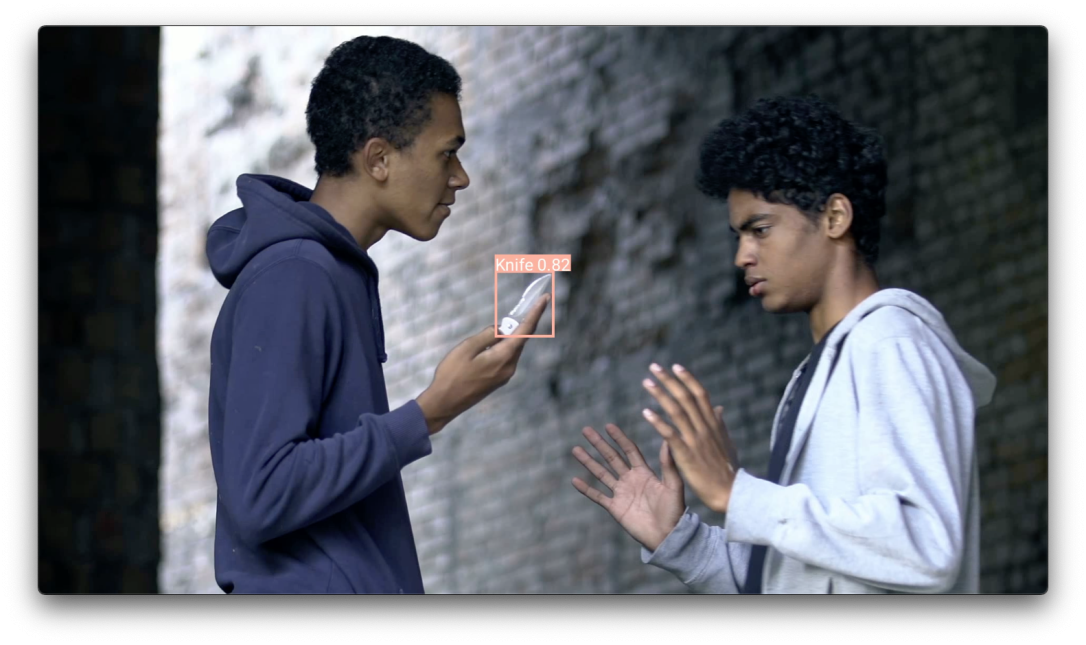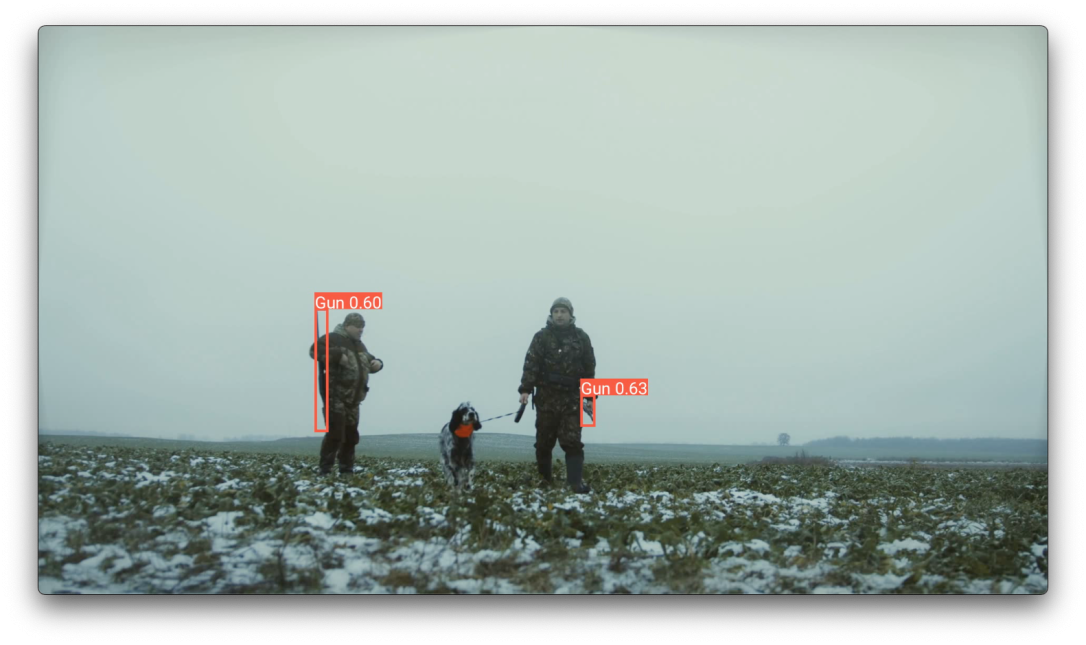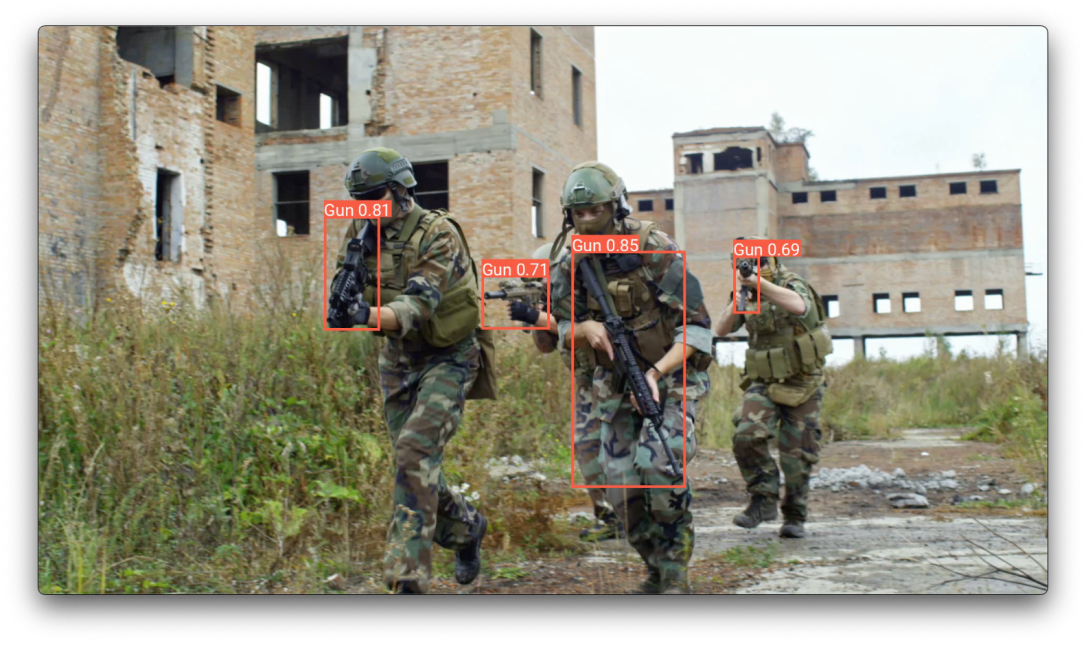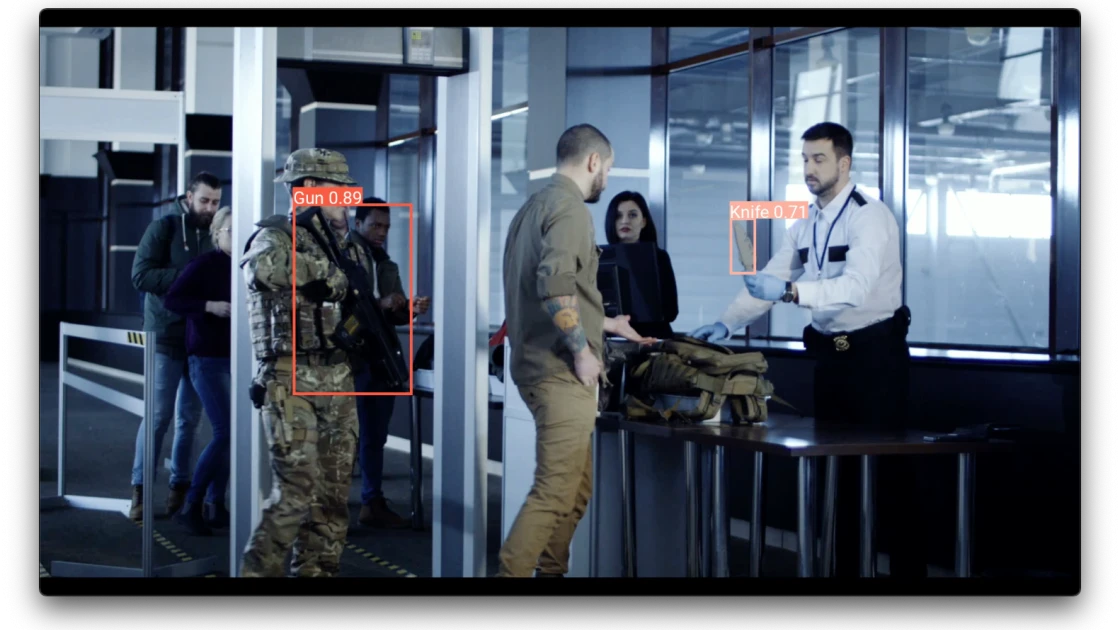Security concerns have reached unprecedented levels, making gun detection systems a critical tool for law enforcement and public safety. These advanced technologies, which leverage video analytics and threat detection capabilities, are revolutionizing the way we approach security in various settings. As incidents of gun violence continue to make headlines, such as school shootings and assassination attempts, the need for effective and proactive measures to identify potential threats has become more pressing than ever.
This article explores the key features of cutting-edge gun detection systems and their role in enhancing public safety. We'll delve into best practices for deployment, addressing concerns about privacy invasion while highlighting the benefits of these systems. Additionally, we'll examine future developments and trends in this rapidly evolving field, including the integration of weapon detection and knife detection technologies. By understanding the potential of these innovative solutions, we can better equip ourselves to address the complex security challenges of our time.
Key Features of Effective Visual-AI Gun Detection Systems
 Visual-AI gun detection systems have become a crucial tool in enhancing security measures. These advanced technologies leverage artificial intelligence and machine learning to analyze real-time data, enabling quick and accurate identification of potential threats. Let's explore the key features that make these systems effective.
Visual-AI gun detection systems have become a crucial tool in enhancing security measures. These advanced technologies leverage artificial intelligence and machine learning to analyze real-time data, enabling quick and accurate identification of potential threats. Let's explore the key features that make these systems effective.
High accuracy and low false positive rates
One of the most critical aspects of gun detection systems is their ability to accurately identify firearms while minimizing false alarms. Advanced AI-powered solutions, such as those offered by VAISense, use deep learning algorithms trained on extensive datasets of images and videos. This training allows the systems to distinguish between actual weapons and other objects with remarkable precision.
These systems can detect firearms instantaneously with a 99% accuracy rate, and close to 100% within the first 15 seconds on a live security camera feed. The high threshold for confirming the presence of a weapon significantly reduces false positives, allowing security personnel to focus on real threats.
Scalability and integration capabilities
 Effective gun detection systems are designed to integrate seamlessly with existing security infrastructure. They can connect to current security camera systems, eliminating the need for additional hardware. This integration allows for the constant sampling and analysis of video frames, with each frame being processed through sophisticated deep learning algorithms.
Effective gun detection systems are designed to integrate seamlessly with existing security infrastructure. They can connect to current security camera systems, eliminating the need for additional hardware. This integration allows for the constant sampling and analysis of video frames, with each frame being processed through sophisticated deep learning algorithms.
The scalability of these systems is impressive, with some capable of analyzing over three billion images each day from security camera video feeds. This high-volume processing enables real-time monitoring across multiple locations, making them suitable for use in complex and crowded scenes.
User-friendly interfaces and customization options
To ensure maximum effectiveness, gun detection systems must be easy to use and adaptable to specific security needs. User-friendly interfaces allow security personnel to quickly interpret and act on the vast amounts of data presented to them, which is crucial in high-pressure situations.
Customization options enable the systems to be tailored to specific environments and security requirements. This flexibility allows for the integration of various detection capabilities, including weapon detection and knife detection, as offered by VAISense. The ability to adapt to different scenarios and weapon types ensures that the system remains effective and relevant over time.
Best Practices for Deployment
Risk assessment and system design
 To implement effective visual-AI gun detection systems, organizations must first conduct a thorough risk assessment. This process helps identify specific vulnerabilities and prioritize areas that require enhanced security measures. Different environments pose unique challenges, so it's crucial to tailor the system to the specific needs of the facility. For instance, schools may require discreet and highly accurate systems, while large public venues might need robust, scalable solutions.
To implement effective visual-AI gun detection systems, organizations must first conduct a thorough risk assessment. This process helps identify specific vulnerabilities and prioritize areas that require enhanced security measures. Different environments pose unique challenges, so it's crucial to tailor the system to the specific needs of the facility. For instance, schools may require discreet and highly accurate systems, while large public venues might need robust, scalable solutions.
When designing the system, compatibility with existing security infrastructure is essential. Seamless integration with surveillance cameras, alarms, and communication networks can save time and money. Organizations should also consider scalability, allowing for the addition of new detection functions such as knife detection or aggressive behavior recognition. VAISense's AI-powered solutions offer this flexibility, providing versatile deployment options that include on-premises edge servers, that process AI on the edge, yet are cloud accessible (and can deliver quick notifications).
Staff training and standard operating procedures
Comprehensive staff training is crucial for the effective implementation of gun detection systems. Employees should be familiar with the threat detection process, alert triggers, and various types of notifications they may receive. Training should be tailored to meet the specific needs of different roles within the organization, as employees in different positions require varying levels of skills for ethical, legal, and safe use of AI.
Standard operating procedures (SOPs) should be established to guide staff actions when an alert is triggered. These procedures typically involve verifying the threat, initiating lockdown protocols, and communicating with law enforcement and building occupants. Regular drills and simulations can help staff familiarize themselves with the system and response protocols, reducing panic and promoting a more composed response during real incidents.
Ongoing maintenance and updates
 To ensure the continued effectiveness of gun detection systems, ongoing maintenance and updates are essential. Regular testing of each camera is necessary to optimize performance and address any issues that may arise. Environmental factors such as shadows, sun angle, and ambient light can affect system effectiveness, so periodic adjustments may be required.
To ensure the continued effectiveness of gun detection systems, ongoing maintenance and updates are essential. Regular testing of each camera is necessary to optimize performance and address any issues that may arise. Environmental factors such as shadows, sun angle, and ambient light can affect system effectiveness, so periodic adjustments may be required.
Organizations should also implement a process to stay updated on the latest AI security risks and keep their risk assessment current. This includes regularly updating the training program to address emerging threats and technological advancements. By fostering a culture of continuous improvement and adaptation, organizations can maintain the resilience of their security measures against evolving threats.
Future Developments and Trends
Improved AI algorithms and processing power
The future of visual-AI gun detection systems is set to be transformed by advancements in AI algorithms and processing capabilities. Self-supervised learning models are emerging as a game-changer in threat detection. These models can adapt to new and evolving threat patterns without requiring large amounts of labeled training data. This adaptability allows the systems to identify anomalies and deviations from normal patterns more effectively, enhancing their ability to detect advanced and previously unseen threats.
Companies like VAISense are at the forefront of this innovation, incorporating weapon detection and knife detection capabilities into their AI-powered solutions. These systems can analyze vast volumes of security telemetry, identifying subtle anomalies and suspicious activities that traditional methods often miss. The continuous learning and adaptation of these AI models ensure long-term effectiveness and minimize the risk of future vulnerabilities.
Integration with predictive analytics
The integration of gun detection systems with predictive analytics is poised to revolutionize security measures. By combining signals across endpoints, networks, and other security tools, AI can pinpoint emerging attacks early. This integration allows for a more comprehensive approach to threat detection, enabling security teams to anticipate and prevent potential incidents before they occur.
Expansion to other threat detection capabilities
As the technology evolves, we're seeing an expansion beyond gun detection to include a wider range of threat detection capabilities. Systems like those offered by VAISense are incorporating features such as knife detection and aggressive behavior recognition. This multi-faceted approach to security provides a more robust defense against various types of threats.
The future of visual-AI gun detection systems lies in their ability to provide a proactive and intelligent approach to security. By leveraging advanced AI capabilities, these systems offer unparalleled threat detection, streamlined investigations, and seamless integration with existing security infrastructure. As the technology continues to advance, it will play an increasingly crucial role in creating safer environments across various sectors, from schools and hospitals to sports arenas and public spaces.
Security concerns have reached unprecedented levels, making gun detection systems a critical tool for law enforcement and public safety. These advanced technologies, which leverage video analytics and threat detection capabilities, are revolutionizing the way we approach security in various settings. As incidents of gun violence continue to make headlines, such as school shootings and assassination attempts, the need for effective and proactive measures to identify potential threats has become more pressing than ever.
This article explores the key features of cutting-edge gun detection systems and their role in enhancing public safety. We'll delve into best practices for deployment, addressing concerns about privacy invasion while highlighting the benefits of these systems. Additionally, we'll examine future developments and trends in this rapidly evolving field, including the integration of weapon detection and knife detection technologies. By understanding the potential of these innovative solutions, we can better equip ourselves to address the complex security challenges of our time.
Key Features of Effective Visual-AI Gun Detection Systems
Visual-AI gun detection systems have become a crucial tool in enhancing security measures. These advanced technologies leverage artificial intelligence and machine learning to analyze real-time data, enabling quick and accurate identification of potential threats. Let's explore the key features that make these systems effective.
High accuracy and low false positive rates
One of the most critical aspects of gun detection systems is their ability to accurately identify firearms while minimizing false alarms. Advanced AI-powered solutions, such as those offered by VAISense, use deep learning algorithms trained on extensive datasets of images and videos. This training allows the systems to distinguish between actual weapons and other objects with remarkable precision.
These systems can detect firearms instantaneously with a 99% accuracy rate, and close to 100% within the first 15 seconds on a live security camera feed. The high threshold for confirming the presence of a weapon significantly reduces false positives, allowing security personnel to focus on real threats.
Scalability and integration capabilities
Effective gun detection systems are designed to integrate seamlessly with existing security infrastructure. They can connect to current security camera systems, eliminating the need for additional hardware. This integration allows for the constant sampling and analysis of video frames, with each frame being processed through sophisticated deep learning algorithms.
The scalability of these systems is impressive, with some capable of analyzing over three billion images each day from security camera video feeds. This high-volume processing enables real-time monitoring across multiple locations, making them suitable for use in complex and crowded scenes.
User-friendly interfaces and customization options
To ensure maximum effectiveness, gun detection systems must be easy to use and adaptable to specific security needs. User-friendly interfaces allow security personnel to quickly interpret and act on the vast amounts of data presented to them, which is crucial in high-pressure situations.
Customization options enable the systems to be tailored to specific environments and security requirements. This flexibility allows for the integration of various detection capabilities, including weapon detection and knife detection, as offered by VAISense. The ability to adapt to different scenarios and weapon types ensures that the system remains effective and relevant over time.
Best Practices for Deployment
Risk assessment and system design
To implement effective visual-AI gun detection systems, organizations must first conduct a thorough risk assessment. This process helps identify specific vulnerabilities and prioritize areas that require enhanced security measures. Different environments pose unique challenges, so it's crucial to tailor the system to the specific needs of the facility. For instance, schools may require discreet and highly accurate systems, while large public venues might need robust, scalable solutions.
When designing the system, compatibility with existing security infrastructure is essential. Seamless integration with surveillance cameras, alarms, and communication networks can save time and money. Organizations should also consider scalability, allowing for the addition of new detection functions such as knife detection or aggressive behavior recognition. VAISense's AI-powered solutions offer this flexibility, providing versatile deployment options that include on-premises edge servers, that process AI on the edge, yet are cloud accessible (and can deliver quick notifications).
Staff training and standard operating procedures
Comprehensive staff training is crucial for the effective implementation of gun detection systems. Employees should be familiar with the threat detection process, alert triggers, and various types of notifications they may receive. Training should be tailored to meet the specific needs of different roles within the organization, as employees in different positions require varying levels of skills for ethical, legal, and safe use of AI.
Standard operating procedures (SOPs) should be established to guide staff actions when an alert is triggered. These procedures typically involve verifying the threat, initiating lockdown protocols, and communicating with law enforcement and building occupants. Regular drills and simulations can help staff familiarize themselves with the system and response protocols, reducing panic and promoting a more composed response during real incidents.
Ongoing maintenance and updates
To ensure the continued effectiveness of gun detection systems, ongoing maintenance and updates are essential. Regular testing of each camera is necessary to optimize performance and address any issues that may arise. Environmental factors such as shadows, sun angle, and ambient light can affect system effectiveness, so periodic adjustments may be required.
Organizations should also implement a process to stay updated on the latest AI security risks and keep their risk assessment current. This includes regularly updating the training program to address emerging threats and technological advancements. By fostering a culture of continuous improvement and adaptation, organizations can maintain the resilience of their security measures against evolving threats.
Future Developments and Trends
Improved AI algorithms and processing power
The future of visual-AI gun detection systems is set to be transformed by advancements in AI algorithms and processing capabilities. Self-supervised learning models are emerging as a game-changer in threat detection. These models can adapt to new and evolving threat patterns without requiring large amounts of labeled training data. This adaptability allows the systems to identify anomalies and deviations from normal patterns more effectively, enhancing their ability to detect advanced and previously unseen threats.
Companies like VAISense are at the forefront of this innovation, incorporating weapon detection and knife detection capabilities into their AI-powered solutions. These systems can analyze vast volumes of security telemetry, identifying subtle anomalies and suspicious activities that traditional methods often miss. The continuous learning and adaptation of these AI models ensure long-term effectiveness and minimize the risk of future vulnerabilities.
Integration with predictive analytics
The integration of gun detection systems with predictive analytics is poised to revolutionize security measures. By combining signals across endpoints, networks, and other security tools, AI can pinpoint emerging attacks early. This integration allows for a more comprehensive approach to threat detection, enabling security teams to anticipate and prevent potential incidents before they occur.
Expansion to other threat detection capabilities
As the technology evolves, we're seeing an expansion beyond gun detection to include a wider range of threat detection capabilities. Systems like those offered by VAISense are incorporating features such as knife detection and aggressive behavior recognition. This multi-faceted approach to security provides a more robust defense against various types of threats.
In Summary
The future of visual-AI gun detection systems lies in their ability to provide a proactive and intelligent approach to security. By leveraging advanced AI capabilities, these systems offer unparalleled threat detection, streamlined investigations, and seamless integration with existing security infrastructure. As the technology continues to advance, it will play an increasingly crucial role in creating safer environments across various sectors, from schools and hospitals to sports arenas and public spaces.

Get Started with Edge AI Today
Our experts are ready to help you get started with an edge AI solution that best fits your needs and will help you leap ahead of your competition. Let's talk!
Get the Latest AI Insights
Subscribe to the VAISense Newsletter.
